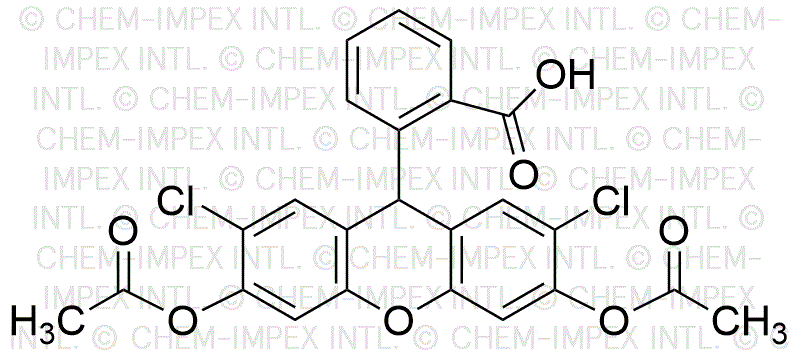- Cell Viability Assays: This compound is commonly used in assays to assess cell viability and proliferation. It can be converted into a fluorescent product, allowing researchers to quantify living cells in various biological studies.
- Reactive Oxygen Species (ROS) Detection: It serves as a probe for detecting reactive oxygen species in cells. This application is crucial in studies related to oxidative stress and cellular responses to different stimuli.
- Drug Development: In pharmaceutical research, it is used to evaluate the efficacy of new drugs by monitoring their effects on cellular health and oxidative stress levels, providing insights into potential therapeutic benefits.
- Fluorescence Microscopy: The compound is utilized in fluorescence microscopy to visualize cellular processes in real-time. Its fluorescent properties allow for detailed imaging of cellular structures and functions.
- Environmental Monitoring: It can be applied in environmental science to assess the impact of pollutants on microbial communities, helping researchers understand the effects of contaminants on ecosystem health.
Informations générales
Propriétés
Sécurité et réglementation
Applications
- Cell Viability Assays: This compound is commonly used in assays to assess cell viability and proliferation. It can be converted into a fluorescent product, allowing researchers to quantify living cells in various biological studies.
- Reactive Oxygen Species (ROS) Detection: It serves as a probe for detecting reactive oxygen species in cells. This application is crucial in studies related to oxidative stress and cellular responses to different stimuli.
- Drug Development: In pharmaceutical research, it is used to evaluate the efficacy of new drugs by monitoring their effects on cellular health and oxidative stress levels, providing insights into potential therapeutic benefits.
- Fluorescence Microscopy: The compound is utilized in fluorescence microscopy to visualize cellular processes in real-time. Its fluorescent properties allow for detailed imaging of cellular structures and functions.
- Environmental Monitoring: It can be applied in environmental science to assess the impact of pollutants on microbial communities, helping researchers understand the effects of contaminants on ecosystem health.
Documents
Fiches de données de sécurité (FDS)
La FDS fournit des informations de sécurité complètes sur la manipulation, le stockage et l’élimination du produit.
Spécifications du produit (PS)
Le PS fournit une description complète des propriétés du produit, notamment sa composition chimique, son état physique, sa pureté et les exigences de stockage. Il détaille également les plages de qualité acceptables et les applications prévues du produit.
Certificats d'analyse (COA)
Recherchez des certificats d'analyse (COA) en saisissant le numéro de lot du produit. Les numéros de lot et de lot se trouvent sur l'étiquette d'un produit, après les mots « Lot » ou « Lot de fabrication ».
Numéro de catalogue
Numéro de lot/série
Certificats d'origine (COO)
Ce certificat d'exploitation confirme le pays dans lequel le produit a été fabriqué, et détaille également les matériaux et composants utilisés et s'il est issu de sources naturelles, synthétiques ou autres sources spécifiques. Ce certificat peut être requis pour les douanes, le commerce et la conformité réglementaire.
Numéro de catalogue
Numéro de lot/série
Fiches de données de sécurité (FDS)
La FDS fournit des informations de sécurité complètes sur la manipulation, le stockage et l’élimination du produit.
DownloadSpécifications du produit (PS)
Le PS fournit une description complète des propriétés du produit, notamment sa composition chimique, son état physique, sa pureté et les exigences de stockage. Il détaille également les plages de qualité acceptables et les applications prévues du produit.
DownloadCertificats d'analyse (COA)
Recherchez des certificats d'analyse (COA) en saisissant le numéro de lot du produit. Les numéros de lot et de lot se trouvent sur l'étiquette d'un produit, après les mots « Lot » ou « Lot de fabrication ».
Numéro de catalogue
Numéro de lot/série
Certificats d'origine (COO)
Ce certificat d'exploitation confirme le pays dans lequel le produit a été fabriqué, et détaille également les matériaux et composants utilisés et s'il est issu de sources naturelles, synthétiques ou autres sources spécifiques. Ce certificat peut être requis pour les douanes, le commerce et la conformité réglementaire.


